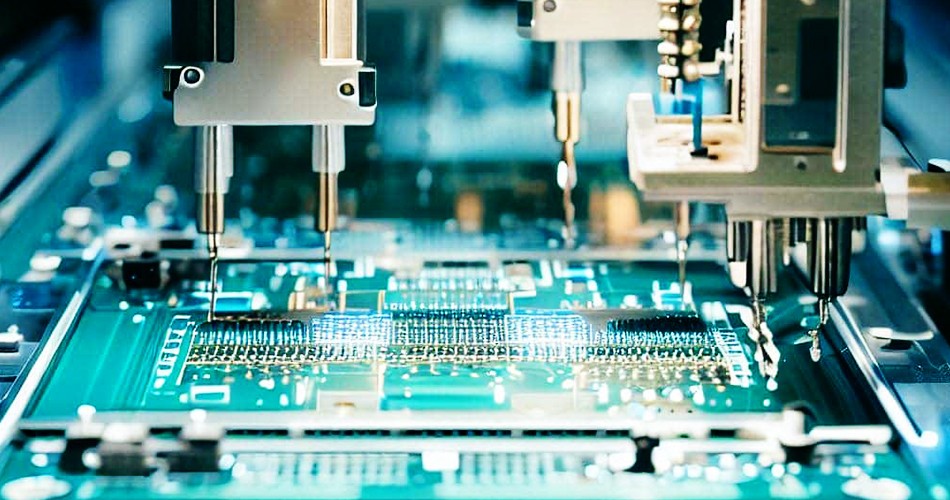- English
- Español
- Português
- русский
- Français
- 日本語
- Deutsch
- tiếng Việt
- Italiano
- Nederlands
- ภาษาไทย
- Polski
- 한국어
- Svenska
- magyar
- Malay
- বাংলা ভাষার
- Dansk
- Suomi
- हिन्दी
- Pilipino
- Türkçe
- Gaeilge
- العربية
- Indonesia
- Norsk
- تمل
- český
- ελληνικά
- український
- Javanese
- فارسی
- தமிழ்
- తెలుగు
- नेपाली
- Burmese
- български
- ລາວ
- Latine
- Қазақша
- Euskal
- Azərbaycan
- Slovenský jazyk
- Македонски
- Lietuvos
- Eesti Keel
- Română
- Slovenski
- मराठी
- Srpski језик
High-voltage circuit boards in PCBA processing
2024-09-04
In modern electronic equipment manufacturing, PCBA processing (Printed Circuit Board Assembly) is a vital link. With the continuous advancement of science and technology, high-voltage circuit boards are used more and more widely, and they play an important role in power electronic equipment, industrial control systems and communication equipment. This article will discuss in detail the high-voltage circuit boards in PCBA processing, introduce their processing procedures, precautions and application areas.

Definition and application of high-voltage circuit boards
High-voltage circuit boards refer to circuit boards that can withstand high-voltage operating conditions, and are usually used in power equipment and electronic products that require high-voltage operation. Its main application areas include:
1. Power electronic equipment: such as frequency converters, power modules, inverters, etc.
2. Industrial control systems: including automation control equipment and high-voltage drive circuits.
3. Communication equipment: such as high-frequency amplifiers, radar systems, etc.
PCBA processing process
The PCBA processing of high-voltage circuit boards is similar to the processing process of ordinary circuit boards, but due to its special application environment, it has higher requirements for processing accuracy and process. The main process is as follows:
Design and drawing
Before starting PCBA processing, you first need to design and draw the circuit board. Design engineers need to consider the working environment and electrical requirements of high-voltage circuit boards to ensure that the circuit layout is reasonable and the insulation is good.
Material selection
High-voltage circuit boards usually use high-temperature and voltage-resistant materials, such as FR-4, high-frequency materials and ceramic substrates. These materials can maintain stable performance under high voltage and high temperature environments.
Circuit board manufacturing
Circuit board manufacturing includes the selection of copper-clad boards, etching and drilling of circuits and other processes. For high-voltage circuit boards, special attention should be paid to the width and spacing of the circuits to ensure that they can withstand high voltages without breakdown.
Component mounting
After the circuit board is manufactured, the component mounting stage begins. Special high-voltage components, such as high-voltage capacitors and high-voltage resistors, should be used during mounting to ensure that the entire board can operate stably.
soldering and assembly
After the components are mounted, they are fixed to the circuit board by soldering. The soldering process of high-voltage circuit boards requires special attention to the reliability of solder joints to avoid cold solder joints and leaking solder joints. After soldering is completed, the entire board is assembled and debugged to ensure that each part of the circuit works normally.
Precautions in high-voltage circuit board processing
Insulation design
High-voltage circuit boards require special attention to insulation issues when designing. Reasonable insulation design can prevent high-voltage arc discharge and protect the safety of circuit boards and their components.
Electromagnetic compatibility
High-voltage circuit boards are prone to generate strong electromagnetic interference, which affects the normal operation of other electronic equipment. Therefore, during the design and processing process, appropriate electromagnetic compatibility measures should be taken, such as adding shielding layers and optimizing layouts.
Thermal management
High-voltage circuit boards generate a lot of heat when working, and good thermal management is the key to ensuring their long-term stable operation. Heat sinks, fans and other measures can be used to ensure that the circuit board works within a suitable temperature range.
Summary
The high-voltage circuit board in PCBA processing has different processing requirements from ordinary circuit boards due to its special working environment and application requirements. Through reasonable design, material selection and process control, high-performance and high-reliability high-voltage circuit boards can be manufactured to meet the needs of power electronic equipment, industrial control systems and communication equipment. In the future, with the continuous advancement of science and technology, high-voltage circuit boards will play an important role in more application scenarios and provide more stable and reliable power support for all walks of life.
-
Delivery Service






-
Payment Options









